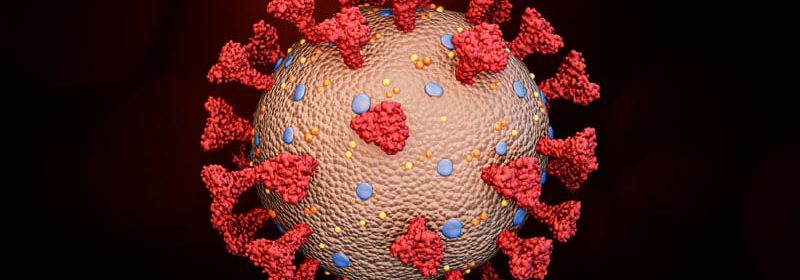Triaging Neurocognitive Screening After SARS-CoV-2 Infection

The study covered in this summary was published in Research Square as a preprint and has not yet been peer reviewed.
Key Takeaways
-
Focal cognitive deficits are more prevalent in hospitalized patients than ambulatory patients.
-
Cognitive performance is related to neuropsychiatric symptoms in ambulatory but not hospitalized patients.
-
Objective neurocognitive measures can supply crucial information to guide clinical decisions regarding the need for further imaging or neurologic workup and should be included as endpoints in clinical trials.
Why This Matters
-
Cognitive complaints commonly occur in patients convalescing from COVID-19, although their cause is frequently unclear.
-
The researchers evaluated factors that play a role in cognitive impairment in ambulatory vs hospitalized patients during the subacute stage of recovery.
-
These results underscore the significance of assessing both subjective and objective complaints in ascertaining the prevalence of cognitive impairment in recovering patients and research participants.
-
The drivers of cognitive complaints are likely different in hospitalized COVID-19 patients in comparison with ambulatory COVID-19 patients, so it’s important to understand these factors in making treatment decisions.
-
Biopsychosocial factors appear to be a powerful driver of cognitive complaints in recovering ambulatory patients. They can be treated with interventions targeting anxiety, depression, sleep disturbances, and pain, which may prove to be the most efficient and cost-effective approach to prevent disability in individuals with mild manifestations of COVID-19.
-
Objective neurocognitive deficits were more prevalent in hospitalized patients — a marker of greater disease severity — with mainly deficits in memory and psychomotor speed. Factors that contribute to focal cognitive deficits in these individuals are emerging and represent a noteworthy realm for future investigation.
Study Design
-
The trial prospectively recruited patients from a hospital-wide registry at the Mayo Clinic in Jacksonville, Florida.
-
All patients tested positive for SARS-CoV-2 infection on a real-time reverse transcriptase polymerase chain-reaction assay between June 2020 and March 2021.
-
Patients were 18 years of age or older.
-
The researchers excluded those with a preexisting major neurocognitive disorder.
-
To participate, patients needed access to a desktop or laptop computer to complete a test and survey.
-
They responded to a comprehensive neuropsychological questionnaire and a computerized cognitive screen using a remote telemedicine platform.
-
The researchers compared rates of subjective and objective neuropsychological impairment between the ambulatory and hospitalized groups. Factors linked to impairment were analyzed separately within each group.
Key Results
-
After laboratory confirmation of SARS-CoV-2 infection, a total of 102 patients (76 ambulatory, 26 hospitalized) completed the symptom inventory and neurocognitive tests in 24 ± 22 days.
-
Hospitalized and ambulatory patients self-reported high rates of cognitive impairment (27% to 40%). There were no variations between the groups.
-
However, hospitalized patients had more significant rates of objective impairment in visual memory (30% vs 4%; P = .001) and psychomotor speed (41% vs 15%; P = .008).
-
Objective cognitive test performance was linked to anxiety, depression, fatigue, and pain in the ambulatory but not the hospitalized group.
Limitations
-
The sample size of hospitalized patients was small.
-
A larger fraction of hospitalized patients in the sample completed outcome assessments compared with ambulatory patients, indicating that remote computerized testing did not present a disproportionate access barrier for patients with more severe illness.
-
Owing to limited instances of delirium, seizures, and stroke, it was not possible to directly consider the contributions of these events to post-COVID-19 subjective complaints and objective impairment.
-
The researchers depended on a 45-minute computerized test battery, which eliminates exposure risk and is available to patients in remote locations, but it necessitates access to a home desktop computer and computer literacy. While this requirement may have skewed the sample toward a more socioeconomically advantaged and younger population, there were no differences in age, race, or ethnicity between those who completed the computerized outcome assessments and those who did not. For patients who are able to give consent electronically, computerized testing does not pose an additional barrier.
-
As a result of this study’s cross-sectional nature, the researchers could not comment on the natural history and long-term risk of COVID-19 cognitive impairment. It will be crucial to monitor cognitive progression at future time points to assess the rate and predictors of cognitive normalization vs decline.
Study Disclosures
-
Gregory S. Day, a co-author, owns stock (>$10,000) in ANI Pharmaceuticals, a generic pharmaceutical company. He serves as a topic editor for DynaMed (EBSCO), overseeing development of evidence-based educational content, a consultant for Parabon Nanolabs (advice relevant to National Institutes of Health small business grant submission), and as the clinical director of the Anti-NMDA Receptor Encephalitis Foundation, Inc, Canada (uncompensated). The other authors have disclosed no relevant financial relationships.
This is a summary of a preprint research study, “Neurocognitive Screening in Patients Following SARS-CoV-2 Infection: Tools for Triage,” written by Karen Blackmon from Mayo Clinic in Florida, on medRxiv provided to you by Medscape. This study has not yet been peer reviewed. The full text of the study can be found on medRxiv.org.
For more news, follow Medscape on Facebook, Twitter, Instagram, and YouTube.
Source: Read Full Article